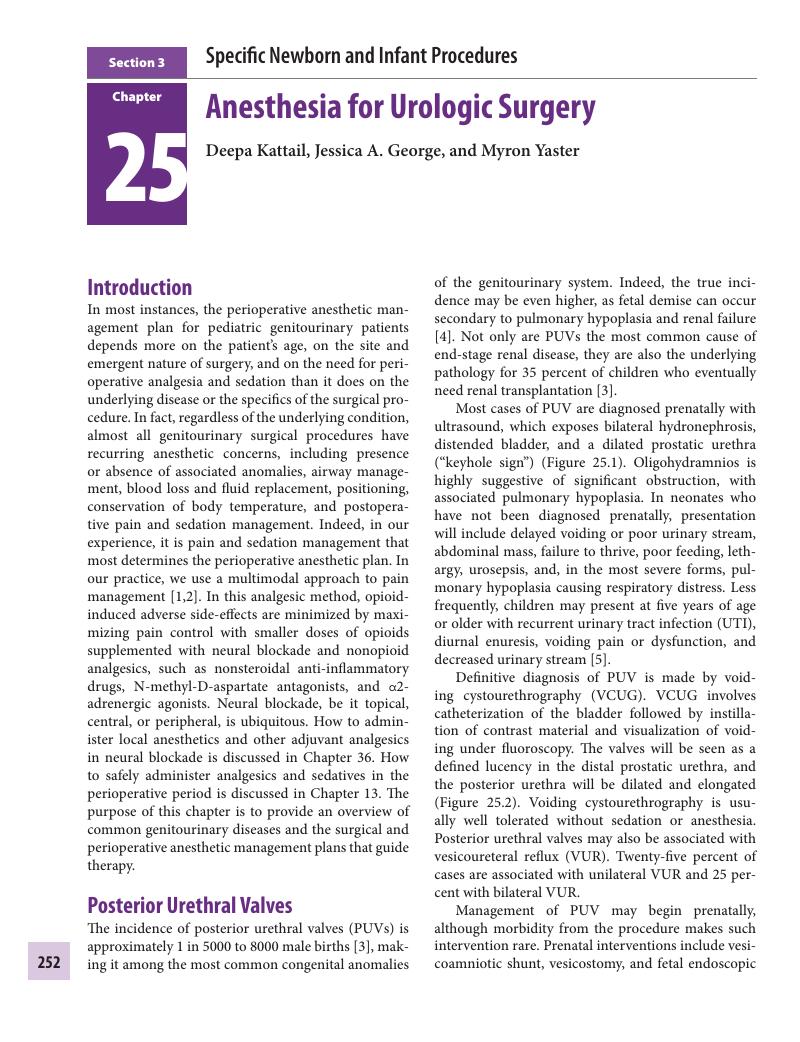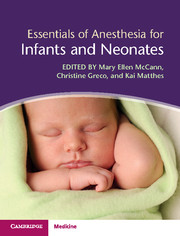Book contents
- Essentials of Anesthesia for Infants and Neonates
- Essentials of Anesthesia for Infants and Neonates
- Copyright page
- Contents
- Contributors
- Preface
- Section 1 Newborn and Infant Physiology for Anesthetic Management
- Section 2 Newborn and Infant Anesthesia
- Section 3 Specific Newborn and Infant Procedures
- 20 Anesthesia for Neurosurgical Procedures
- 21 Anesthesia for Otolaryngologic Procedures in Infants and Neonates
- 22 Anesthesia for Plastic Surgery
- 23 Anesthesia for Abdominal Wall Reconstruction Procedures
- 24 Anesthesia for Intra-Abdominal Procedures
- 25 Anesthesia for Urologic Surgery
- 26 Anesthesia for Thoracic Surgery
- 27 Congenital Diaphragmatic Hernia
- 28 Congenital Heart Disease in the Neonate and Infant
- 29 Noncardiac Surgery in Neonates and Infants With Cardiac Disease
- 30 Neonatal and Infant Tumors
- 31 Anesthesia for Transplant Surgery
- 32 Anesthesia for Interventional Radiology Procedures
- 33 Anesthesia for Conjoined Twins
- 34 Anesthesia for Fetal Surgery
- Section 4 Pain Management and Other Newborn and Infant Anesthesia Concerns
- Index
- References
25 - Anesthesia for Urologic Surgery
from Section 3 - Specific Newborn and Infant Procedures
Published online by Cambridge University Press: 09 February 2018
- Essentials of Anesthesia for Infants and Neonates
- Essentials of Anesthesia for Infants and Neonates
- Copyright page
- Contents
- Contributors
- Preface
- Section 1 Newborn and Infant Physiology for Anesthetic Management
- Section 2 Newborn and Infant Anesthesia
- Section 3 Specific Newborn and Infant Procedures
- 20 Anesthesia for Neurosurgical Procedures
- 21 Anesthesia for Otolaryngologic Procedures in Infants and Neonates
- 22 Anesthesia for Plastic Surgery
- 23 Anesthesia for Abdominal Wall Reconstruction Procedures
- 24 Anesthesia for Intra-Abdominal Procedures
- 25 Anesthesia for Urologic Surgery
- 26 Anesthesia for Thoracic Surgery
- 27 Congenital Diaphragmatic Hernia
- 28 Congenital Heart Disease in the Neonate and Infant
- 29 Noncardiac Surgery in Neonates and Infants With Cardiac Disease
- 30 Neonatal and Infant Tumors
- 31 Anesthesia for Transplant Surgery
- 32 Anesthesia for Interventional Radiology Procedures
- 33 Anesthesia for Conjoined Twins
- 34 Anesthesia for Fetal Surgery
- Section 4 Pain Management and Other Newborn and Infant Anesthesia Concerns
- Index
- References
Summary

- Type
- Chapter
- Information
- Essentials of Anesthesia for Infants and Neonates , pp. 252 - 263Publisher: Cambridge University PressPrint publication year: 2018

